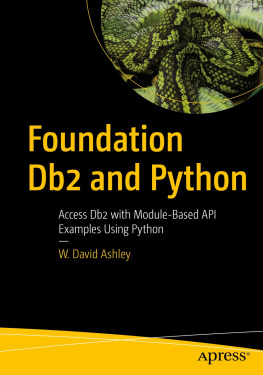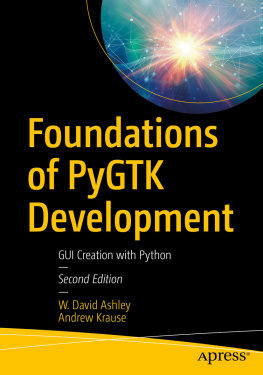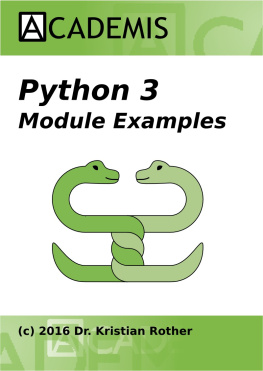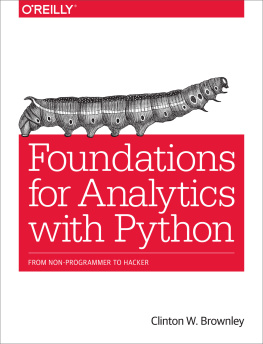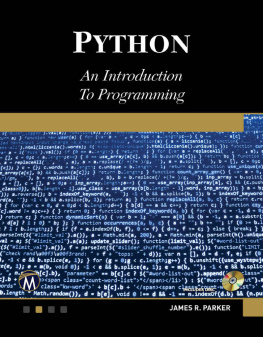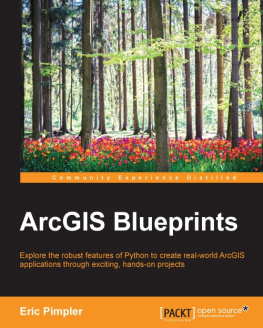W. David Ashley - Access Db2 with Module-Based API Examples Using Python
Here you can read online W. David Ashley - Access Db2 with Module-Based API Examples Using Python full text of the book (entire story) in english for free. Download pdf and epub, get meaning, cover and reviews about this ebook. year: 2021, publisher: Apress, genre: Computer. Description of the work, (preface) as well as reviews are available. Best literature library LitArk.com created for fans of good reading and offers a wide selection of genres:
Romance novel
Science fiction
Adventure
Detective
Science
History
Home and family
Prose
Art
Politics
Computer
Non-fiction
Religion
Business
Children
Humor
Choose a favorite category and find really read worthwhile books. Enjoy immersion in the world of imagination, feel the emotions of the characters or learn something new for yourself, make an fascinating discovery.
- Book:Access Db2 with Module-Based API Examples Using Python
- Author:
- Publisher:Apress
- Genre:
- Year:2021
- Rating:4 / 5
- Favourites:Add to favourites
- Your mark:
- 80
- 1
- 2
- 3
- 4
- 5
Access Db2 with Module-Based API Examples Using Python: summary, description and annotation
We offer to read an annotation, description, summary or preface (depends on what the author of the book "Access Db2 with Module-Based API Examples Using Python" wrote himself). If you haven't found the necessary information about the book — write in the comments, we will try to find it.
Access Db2 with Module-Based API Examples Using Python — read online for free the complete book (whole text) full work
Below is the text of the book, divided by pages. System saving the place of the last page read, allows you to conveniently read the book "Access Db2 with Module-Based API Examples Using Python" online for free, without having to search again every time where you left off. Put a bookmark, and you can go to the page where you finished reading at any time.
Font size:
Interval:
Bookmark:
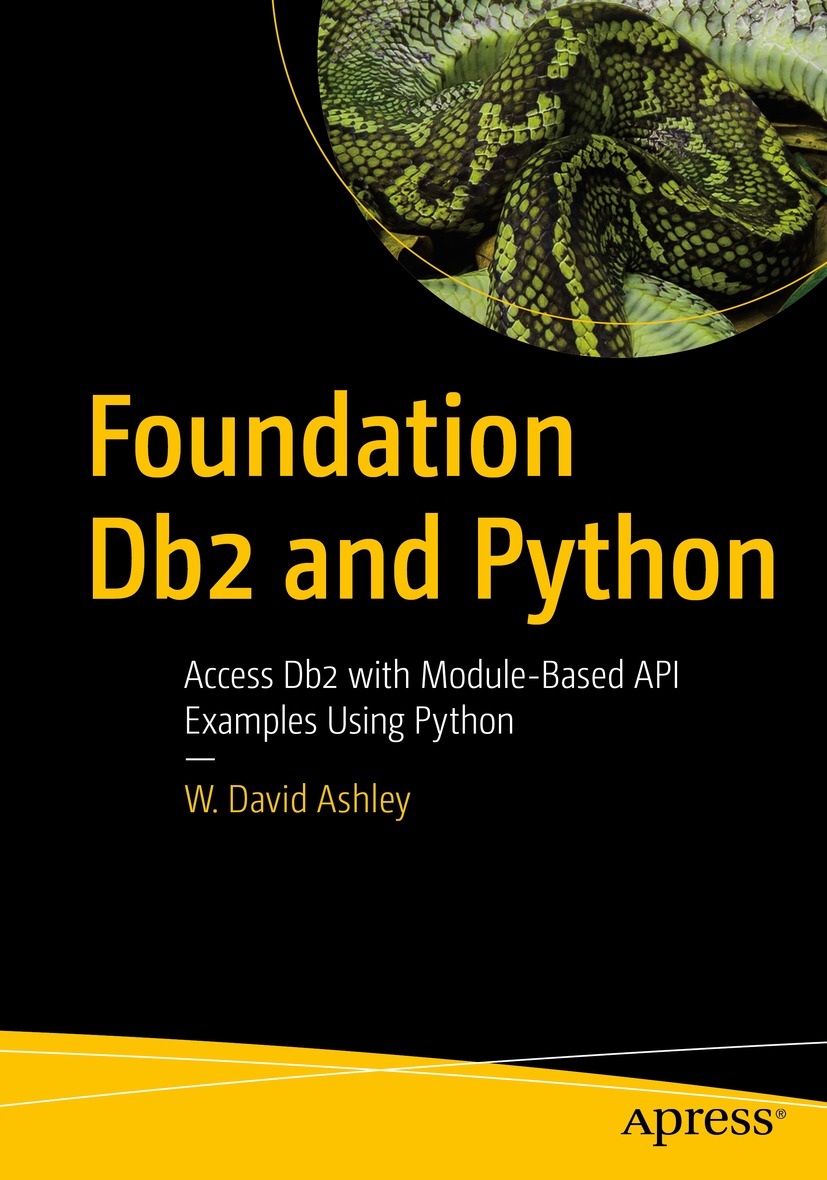

This Apress imprint is published by the registered company APress Media, LLC part of Springer Nature.
The registered company address is: 1 New York Plaza, New York, NY 10004, U.S.A.
This book is dedicated to teachers everywhere, but especially all those who had me as a student.

is a technical writer for Skillsoft where he specializes in open source, particularly Linux. As a member of the Linux Fedora documentation team, he recently led the Libvirt project documentation and wrote the Python programs included with it. He has developed in 20 different programming languages during his 30 years as a software developer and IT consultant, including more than 18 years at IBM and 12 years with American Airlines.

is a senior technical member for Oracle Cloud Infrastructure. As part of IBM Watson Health Lab, he has developed many scalable systems, published a few research papers, and applied some patents to USPTO. He has an ample amount of hands-on experience in Python, Java, machine learning, and many database systems. He earned his masters degree from the Indian Institute of Technology, Kharagpur, India.
Welcome to this introduction to Db2. Since you are here, you are likely looking for a place to get started with Db2. Our hope is that this book will be that first step you are looking for. This book is meant to be an introduction to the Db2 environment and to the Python interface. The first half of the book will cover Db2 at a level that should be of interest to both administrators and programmers. It will cover many aspects of Db2 that you will make use of in either of the two roles. The last half of the book will concentrate on using the Python programming language to interface to Db2. While mainly oriented to programmers, administrators will find it useful as well for some of their everyday tasks.
Db2 has a long history and is the first relational database implementation. It was first proposed by Edgar Frank Ted Codd in a paper titled A Relational Model of Data for Large Shared Data Banks in 1969 while working at the IBMs San Jose Research Laboratory in California. In the next four years, IBM researchers worked to create a system based on the principles described in Codds paper (called System R ). During this time, it became obvious that a new language was needed to interact with the new system. Codd wrote a new paper A Data Base Sublanguage Founded on Relational Calculus, which became the basis for the new language called DSL/Alpha . This quickly went through some name changes but eventually ended up being called SQL, short for Structured Query Language.
Eventually there was an effort in the 1970s to port DSL/Alpha to the 370 mainframe environment. It was renamed to Database 2 in 1982. The next year it was made available to the public with another name change, DB2. This was a limited release but was highly regarded by the customers that evaluated it. The customers actually pushed IBM to deliver DB2 to a wider set of customers. IBM was somewhat reluctant because they were trying to hold on to their IMS/DB market share. But eventually the customers won out, and DB2 began to spread to other platforms including OS/2, AIX/RS6000, and Windows.
Db2 (formerly DB2 LUW)
Db2 for z/OS (formerly DB2 for z/OS)
Db2 Hosted (formerly DB2 on Cloud)
Db2 on Cloud (formerly dashDB for Transactions)
Db2 Event Store (a new in-memory database for event-driven transaction processing)
Db2 Warehouse on Cloud (formerly dashDB)
Db2 Warehouse (formerly dashDB Local)
IBM Integrated Analytics System (a new system platform that combines analytic performance and functionality of the IBM PureData System with IBM Netezza)
The code bases for todays Db2 offerings share a common code base that makes porting the code to another hardware/software platform a relatively easy process. The SQL code base has been standardized so that it is the same across all platforms, making moving to another platform an easy task from a programming perspective.
There is also a current movement in programming applications with embedded SQL. These types of applications are very hard to port from one platform to another without major code modifications. Instead, IBM is moving (where possible) to an API that can be called to process SQL statements and make use of programming language variables for values to be added to the SQL statement. This is the methodology used for Python that we will explore later in this book.
In the past, Db2 was considered to be too large for most applications. But as personal computers have become a lot more powerful and then databases used by even a small number of people have become extremely large, Db2 has become more attractive in the management of this data. Also, the pricing model of Db2 on these platforms has become more competitive. So if you need the performance and the ability to manage large amounts of data, Db2 can be a very attractive product.
Font size:
Interval:
Bookmark:
Similar books «Access Db2 with Module-Based API Examples Using Python»
Look at similar books to Access Db2 with Module-Based API Examples Using Python. We have selected literature similar in name and meaning in the hope of providing readers with more options to find new, interesting, not yet read works.
Discussion, reviews of the book Access Db2 with Module-Based API Examples Using Python and just readers' own opinions. Leave your comments, write what you think about the work, its meaning or the main characters. Specify what exactly you liked and what you didn't like, and why you think so.

